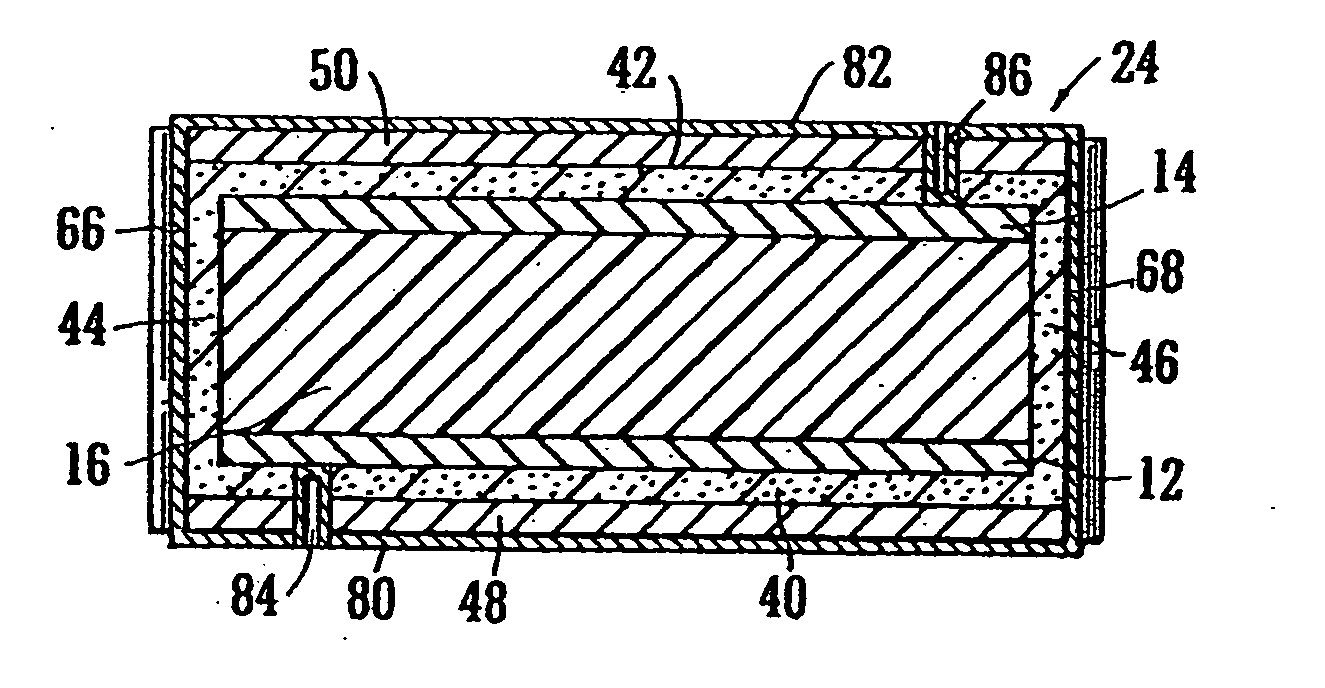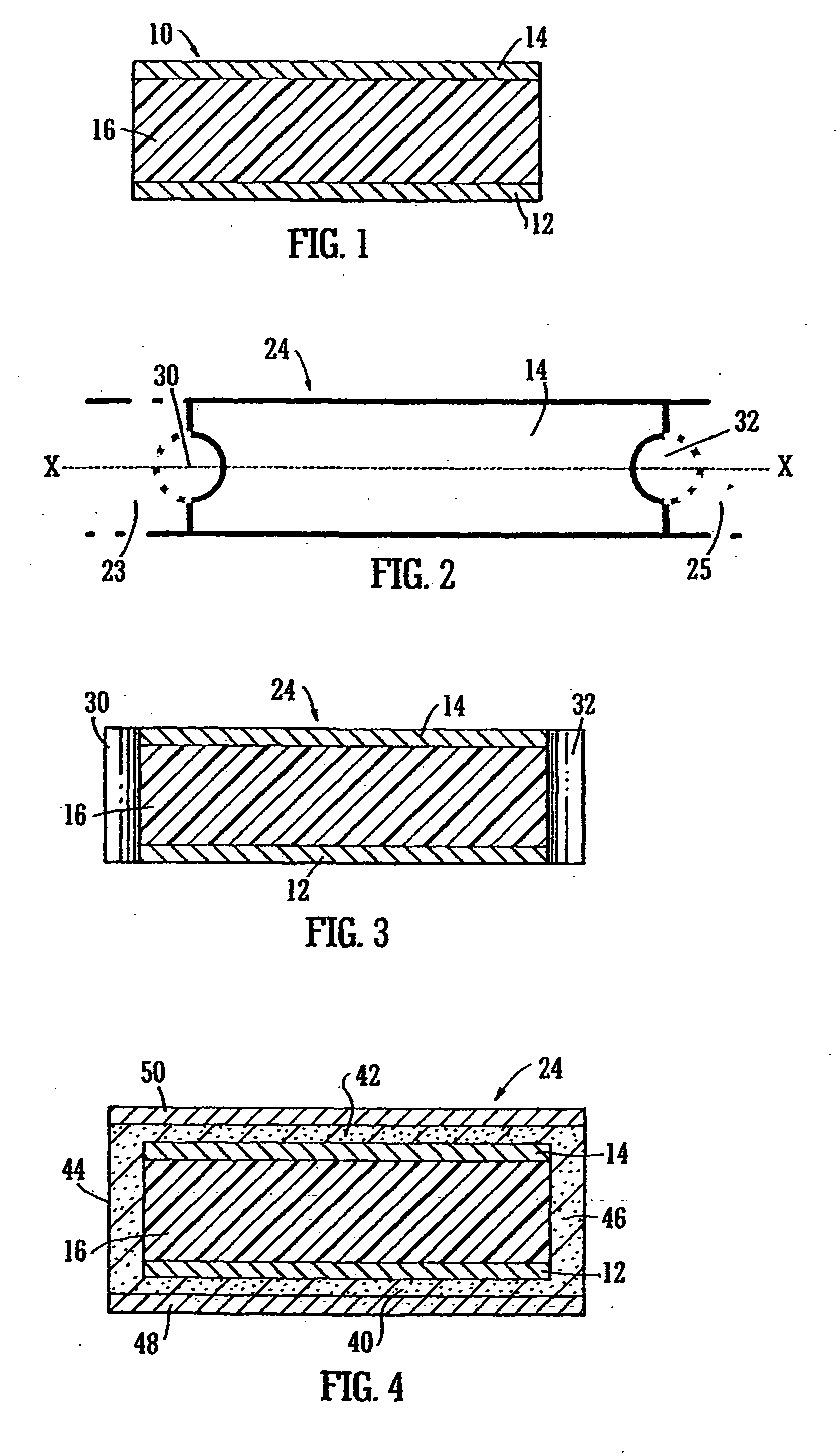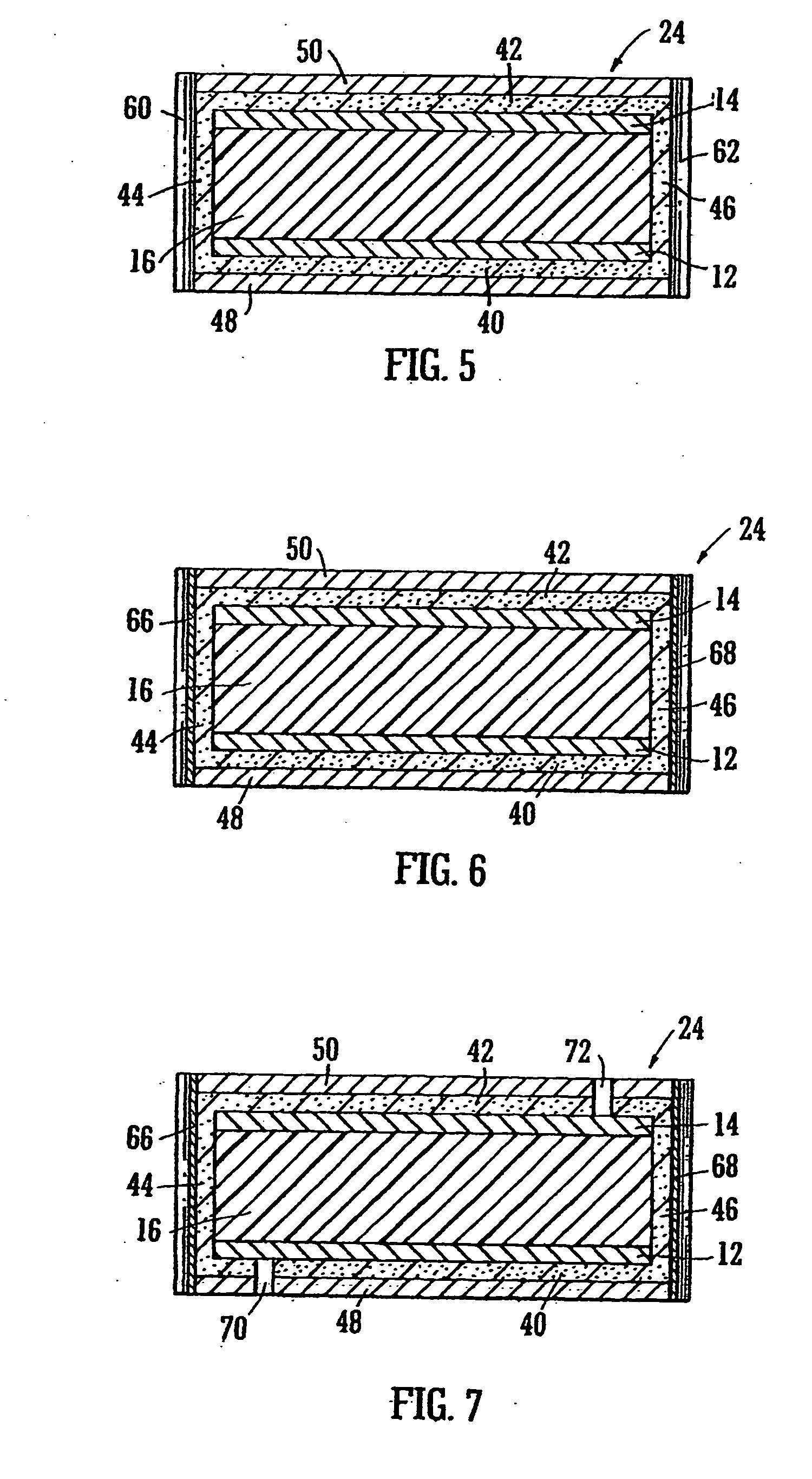Conductive polymer device and method of manufacturing same
- Summary
- Abstract
- Description
- Claims
- Application Information
AI Technical Summary
Benefits of technology
Problems solved by technology
Method used
Image
Examples
Embodiment Construction
[0082] Referring now to the drawings, FIG. 1 illustrates a portion of a laminated sheet 10 that may be provided as an initial step in the process of manufacturing an electronic device in accordance with the present invention. The sheet 10 comprises two layers of metal foil 12, 14 and a region of active device material, for example conductive polymer PTC material 16. Specifically, the exemplary laminated sheet 10 shown comprises a layer of conductive polymer PTC material 16 sandwiched between a first or lower layer of metal foil 12 and a second or upper layer of metal foil 14.
[0083] The layer of conductive polymer PTC material 16 may comprise any suitable PTC material, including for example any suitable conductive polymer composition. An example of a suitable conductive polymer composition would be high density polyethylene (HDPE) into which is mixed an amount of carbon black that results in the desired electrical operating characteristics. An example of such a mixture is disclosed ...
PUM
 Login to View More
Login to View More Abstract
Description
Claims
Application Information
 Login to View More
Login to View More - R&D
- Intellectual Property
- Life Sciences
- Materials
- Tech Scout
- Unparalleled Data Quality
- Higher Quality Content
- 60% Fewer Hallucinations
Browse by: Latest US Patents, China's latest patents, Technical Efficacy Thesaurus, Application Domain, Technology Topic, Popular Technical Reports.
© 2025 PatSnap. All rights reserved.Legal|Privacy policy|Modern Slavery Act Transparency Statement|Sitemap|About US| Contact US: help@patsnap.com



